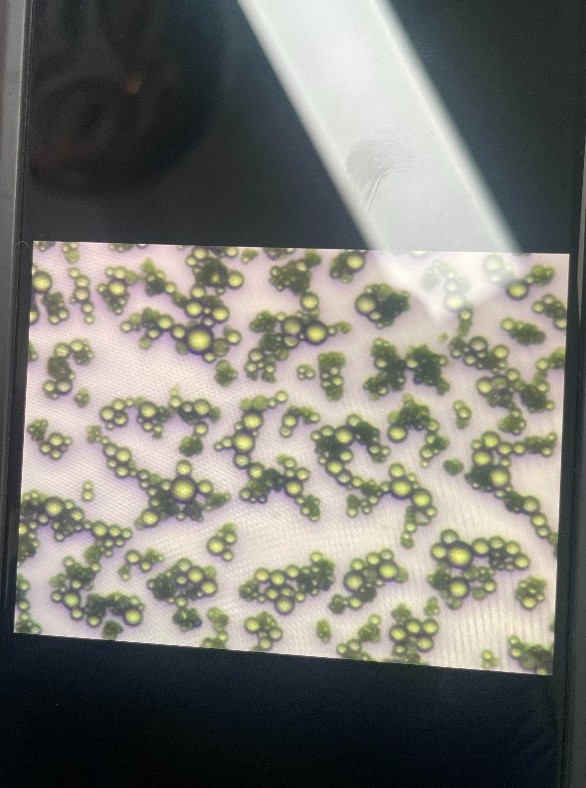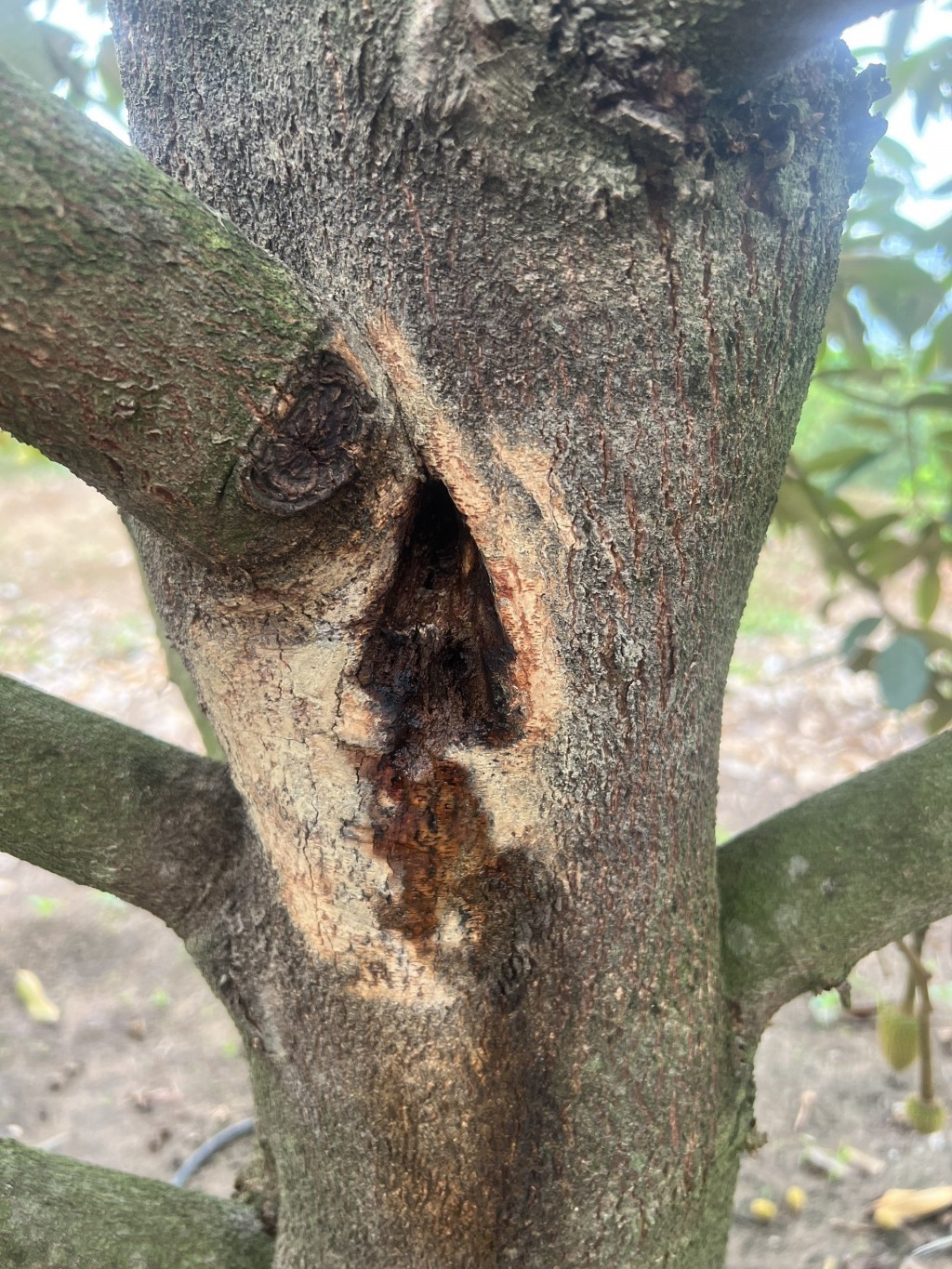
Durian pus disease
Gum rot on durian is one of the most serious diseases of durian trees, greatly affecting productivity, quality and even killing the tree if not treated promptly. This disease has become a top concern for durian growers in many countries, especially in tropical regions like Vietnam, where weather conditions are favorable for the development of pathogenic fungi.
In this article, we will learn in detail about the causes, symptoms, harms, and measures to prevent gum rot to effectively protect durian gardens.
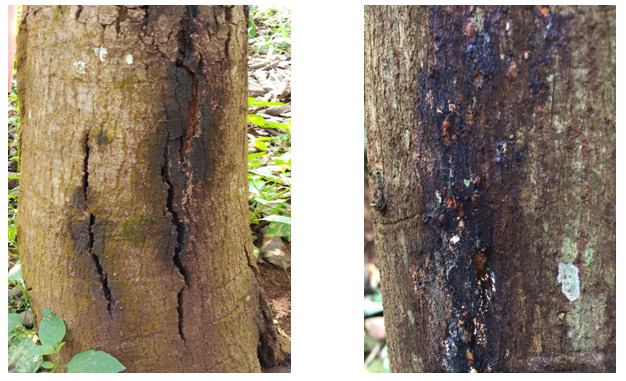
1. Causes of gum rot
Gum rot on durian is mainly caused by the fungus Phytophthora palmivora. This is a common fungus that causes disease on many different crops, and durian is one of the most vulnerable subjects. Phytophthora fungus can survive for a long time in soil and water, easily spread through rainwater, irrigation water or infected farming tools.
Conditions that are favorable for fungal growth include:
- High humidity: Wet weather, especially during the rainy season or in areas with high humidity, creates favorable conditions for fungal growth and spread.
- Warm temperatures: Phytophthora thrives in temperatures between 25-30°C.
- Poorly drained soil: Soil with poor drainage or frequent flooding is an ideal environment for fungal invasion and disease.
- Weakened or damaged trees: Durian trees that have been attacked by pests, or have been mechanically damaged (due to improper pruning, falling), are susceptible to fungal invasion through open wounds.
2. Symptoms of gummosis
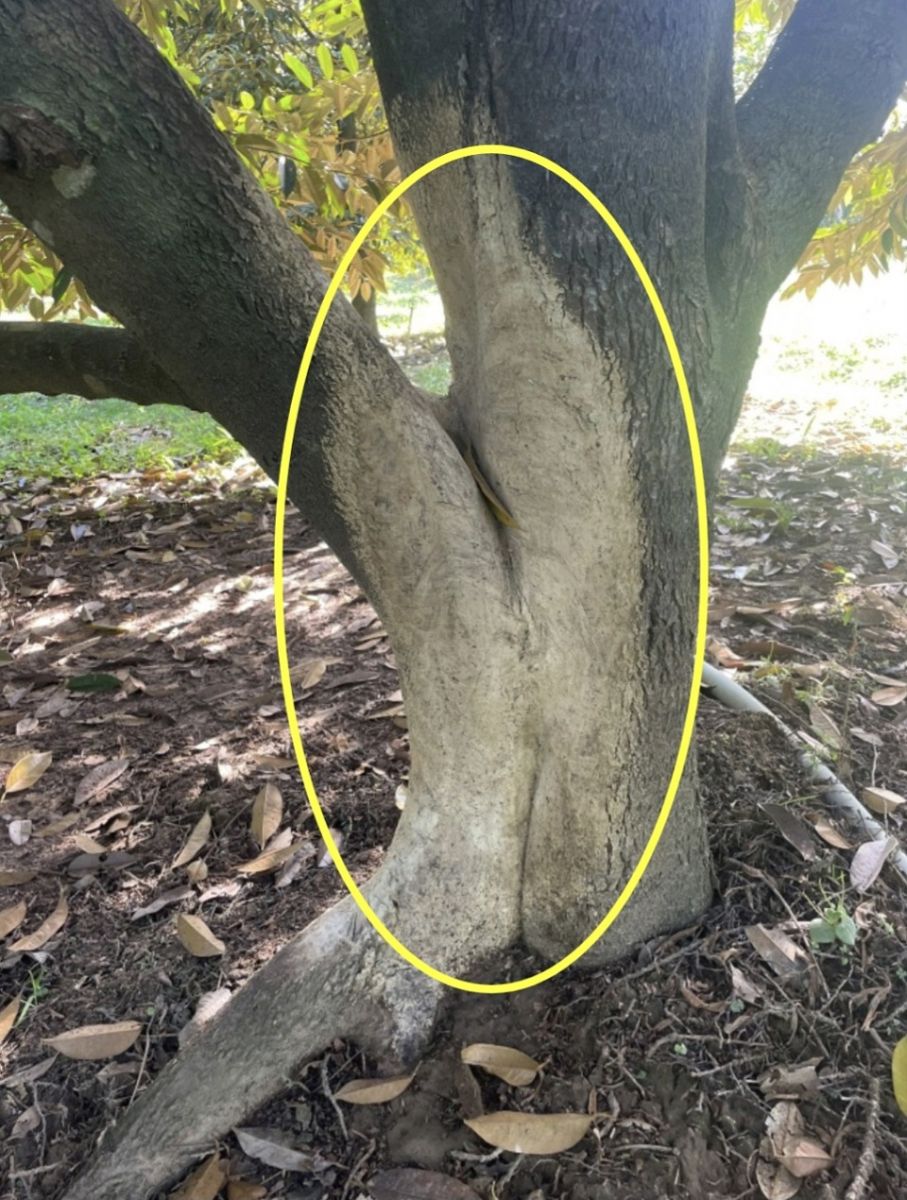
Gummosis can appear on many parts of the durian tree, but is most common on the trunk, base, and roots.
2.1. On the trunk and base
Initial symptoms are usually dark brown, wet, or patchy spots that appear on the trunk or base of the tree. After a while, these spots spread, with a yellow-brown or milky white pus oozing out. The pus often has a foul odor and may appear as cracked scales, weakening the tree trunk.
2.2. On the roots
Phytophthora fungus can also attack the tree's root system, causing the roots to rot and lose their ability to absorb water and nutrients. When the roots are damaged, the tree will show signs of weakness, the leaves will turn yellow and fall off, leading to gradual death from top to bottom.
2.3. On the fruit
Durian fruit can also be oozed, with rotten spots and sap flowing on the skin. Infected fruit will grow poorly, become deformed or fall early, affecting the quality and yield of the harvest.
3. Harmful effects of oozing disease
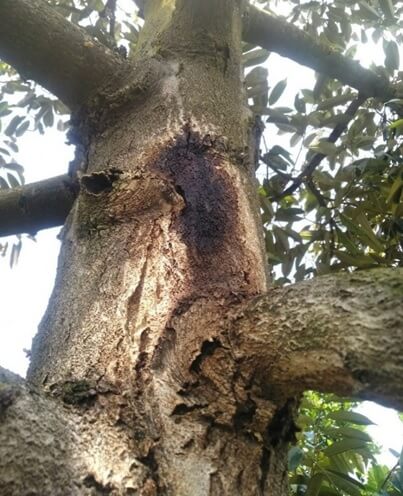
Oozing disease causes great damage to durian growers, with the main effects as follows:
- Reduced productivity and quality: Infected trees often have yellow, wilted leaves, fruit falls early and is of poor quality. This reduces the harvest yield and economic value of durian.
- Weakens or kills the tree: When the disease becomes severe, the tree can slowly die due to the loss of its ability to absorb water and nutrients. This causes great damage to durian orchards, especially mature trees that are being harvested.
- Spreads if not controlled promptly: Oozing disease can spread rapidly through soil, water or tools, affecting the entire durian orchard if not handled properly.
4. Conditions for disease occurrence
The gummosis disease often occurs and develops strongly in the following conditions:
- Heavy rain, high humidity: Especially during the rainy season or areas with frequent fog.
- Poorly drained soil: Waterlogged land, no good drainage system.
- Durian trees are weakened by pests, lack of nutrients or mechanical damage.
5. Measures to prevent gummosis
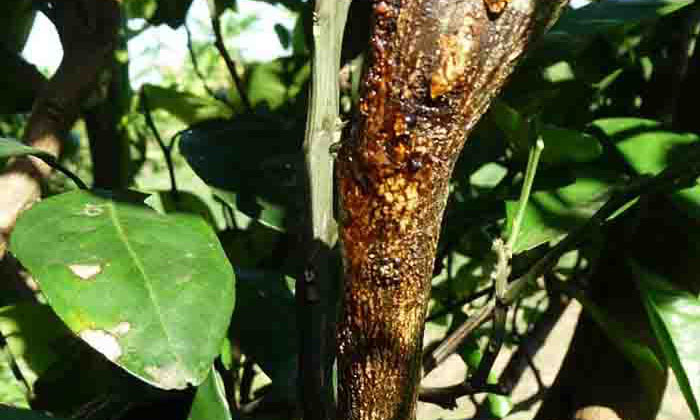
Prevention and control of gummosis disease on durian requires a combination of many measures, from cultivation to the use of pesticides.
5.1. Cultivation measures
- Improve the drainage system: Ensure that the soil has good drainage capacity, avoid prolonged flooding. You can dig drainage ditches around the base of the tree or make raised beds to prevent water stagnation.
- Pruning and cleaning plants: Prune diseased branches, fallen leaves and weak plant parts to reduce the source of disease transmission. Destroy infected plant residues safely to prevent the spread.
- Balanced fertilization: Provide adequate nutrition for plants, especially potassium and calcium, to help plants stay healthy and increase their resistance to disease.
5.2. Use of pesticides
- Fungicides: Pesticides containing active ingredients such as Metalaxyl, Fosetyl-Al or Phosphorous acid can be used to control canker. These drugs can be used to spray on the trunk or water around the base.
- Preventive spraying: Preventive spraying should be done at the beginning of the rainy season or as soon as signs of disease are detected, especially in wet weather. Medicines containing active ingredients for disease prevention and treatment such as: Tatsu 25WP, NAPOLEON, Metalaxyl.
5.3. Biological measures
- Use of biological products: Products containing antagonistic microorganisms such as Trichoderma can be used to inhibit the growth of pathogenic fungi. The use of biological products is a safe, environmentally friendly measure and can help reduce dependence on chemical drugs.
5.4. Technical measures
- Isolate diseased plants: If a plant is found to be severely infected, it should be isolated and treated to prevent the spread to other plants. Lime powder or disinfectants can be spread around the base of the tree.
- Protect the tree from mechanical damage: Avoid damaging the trunk and base of the tree during pruning, weeding or harvesting. If the tree is damaged, it should be treated immediately with fungicides or disinfectants.
6. Conclusion
Durian gummosis is a major challenge for growers, requiring proper care and attention to protect the orchard from damage. A combination of disease prevention and control measures, from improving growing conditions, using pesticides properly, to applying biological measures, will help minimize risks and protect durian yields.
Growers need to pay attention to the health of the trees, especially during the rainy season, and apply timely preventive measures when signs of disease are detected. Proper care not only helps prevent gummosis but also ensures that durian grows healthily, achieves high yields and brings great economic value.
Bình luận
Những bình luận mới nhất
